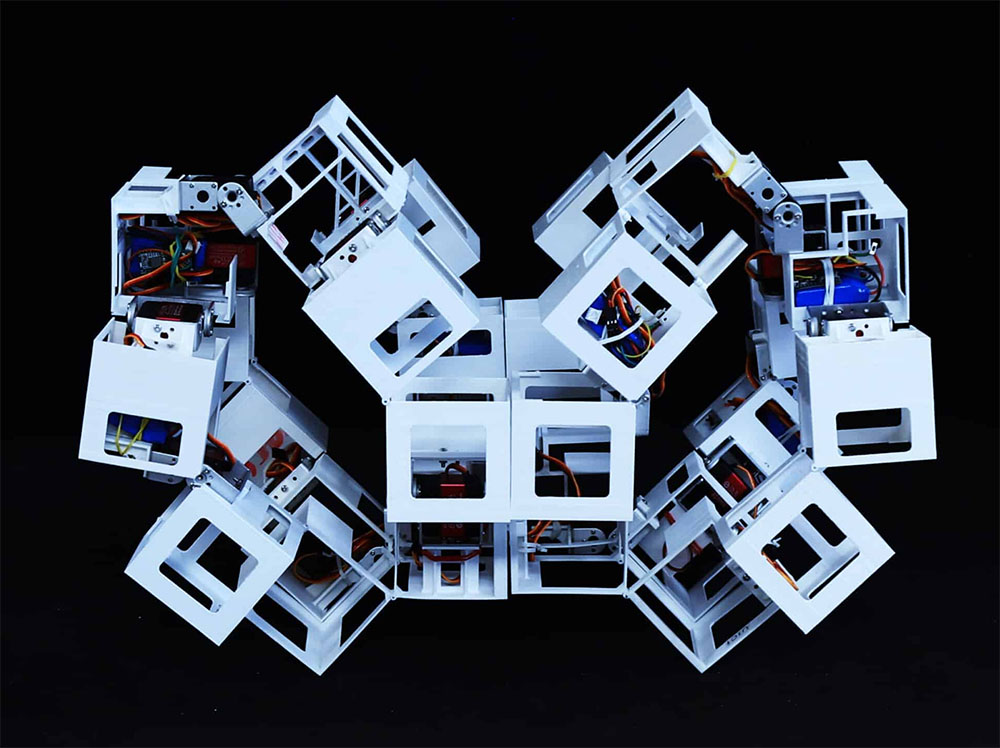| Jul 29, 2024 | |
Shape-shifting 'transformer bots' inspired by origami |
|
| (Nanowerk News) Inspired by the paper-folding art of origami, North Carolina State University engineers have discovered a way to make a single plastic cubed structure transform into more than 1,000 configurations using only three active motors. The findings could pave the way for shape-shifting artificial systems that can take on multiple functions and even carry a load – like versatile robotic structures used in space, for example. | |
| “The question we’re asking is how to achieve a number of versatile shapes with the fewest number of actuators powering the shapeshifting,” said Jie Yin, associate professor of mechanical and aerospace engineering and co-corresponding author of a paper describing the work (Nature Communications, "Adaptive hierarchical origami-based metastructures"). “Here we use a hierarchical concept observed in nature – like layered muscle fibers – but with plastic cubes to create a transforming robot.” | |
 |
|
| Transformer bots can form more than 1,000 shapes. (Image: Jie Yin, NC State University) | |
| The NC State researchers assembled hollow, plastic cubes using a 3D printer and assembled 36 of them together with rotating hinges; some hinges were fixed with metal pins, while others were activated wirelessly with a motor. | |
| The researchers were able to move the cubes into more than 1,000 shapes using only three active motors. Those shapes included tunnel-like structures, bridge-like structures and even multi-story architectures. | |
| The untethered transformer bots can move forward, backward and sideways – without feet – merely by controlling the ways the structure’s shape changes. The bots can also transform relatively quickly from flat, or fully open, to a boxlike larger cube, or fully closed. The bots also can carry a load about three times their own weight. | |
| Next, the researchers will attempt to make the transformer bots even better. | |
| “We want to make a more robust structure that can bear larger loads,” said Yanbin Li an NC State postdoctoral researcher and co-corresponding author of the paper. “If we want a car shape, for example, how do we design the first structure that can transform into a car shape? We also want to test our structures with real-world applications like space robots.” | |
| “We think these can be used as deployable, configurable space robots and habitats,” said Antonio Di Lallo, an NC State postdoctoral researcher and co-first author of the paper. “It’s modular, so you can send it to space flat and assemble it as a shelter or as a habitat, and then disassemble it.” | |
| “For users, it needs to be easy to assemble and to control,” Yin said. |
| Source: North Carolina State University (Note: Content may be edited for style and length) |
We curated a list with the (what we think) 10 best robotics and AI podcasts – check them out!
Also check out our Smartworlder section with articles on smart tech, AI and more.

